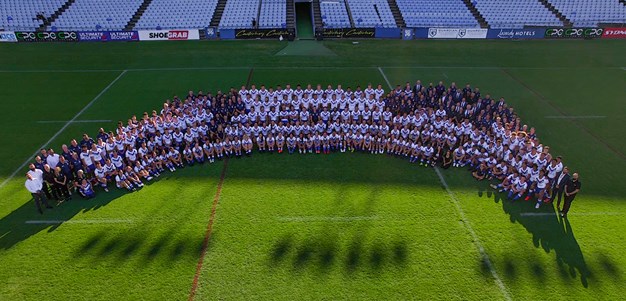The 2015 pre-season has begun with many of the new faces been put through a Vo2 max test to get their summer started.
VO2 max, or maximal oxygen uptake, is one factor that can determine an athlete's capacity to perform sustained exercise and is linked to aerobic endurance.

VO2 max refers to the maximum amount of oxygen that an individual can utilize during intense or maximal exercise. It is measured as "milliliters of oxygen used in one minute per kilogram of body weight."

This measurement is generally considered the best indicator of an athlete's cardiovascular fitness and aerobic endurance. Theoretically, the more oxygen you can use during high level exercise, the more ATP (energy) you can produce. This is often the case with elite endurance athletes who typically have very high VO2 max values.

V02 max should not be confused with the lactate threshold (LT) or anaerobic threshold (AT), which refers to the point during exhaustive, all-out exercise at which lactate builds up in the muscles during exercise. With proper training, athletes are often able to substantially increase their AT and exercise longer at a higher intensity.

How Is VO2 Max Measured?
Measuring VO2 max accurately requires an all-out effort (usually on a treadmill or bicycle) performed under a strict protocol in a sports performance lab. These protocols involve specific increases in the speed and intensity of the exercise and collection and measurement of the volume and oxygen concentration of inhaled and exhaled air. This determines how much oxygen the athlete is using.

An athlete's oxygen consumption rises in a linear relationship with exercise intensity -- up to a point. There is a specific point at which oxygen consumption plateaus even if the exercise intensity increases. This plateau marks the V02 max. It's a painful point in VO2 max testing where the athlete moves from aerobic metabolism to anaerobic metabolism (See the article: Energy Pathways for Exercise). From here, it's not long before muscle fatigue forces the athlete to stop exercising. The test usually takes between 10 and 15 minutes and requires an athlete to be completely rested and motivated to endure the pain long enough to find the true VO2 max.
Can You Change Your VO2 Max?
Research shows that although VO2 max has a genetic component it can also be increased through training. The two methods for increasing VO2 max include increases in both training volume and intensity. Research also indicates that the less fit an individual is, the more they can increase their VO2 max through training. In fact, novice exercisers have been able to increase VO2 max by 20 percent through proper training. Fit athletes have a harder time increasing their VO2 max, most likely because they are already so near their genetic potential.









